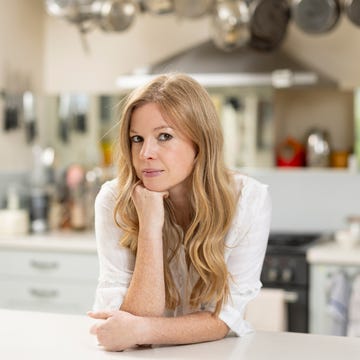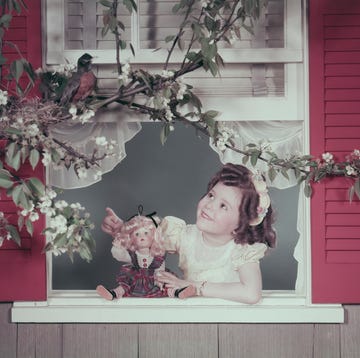Gardens are a sanctuary; a private space to escape the business of everyday life. But whether you have acres of land or just a cosy balcony, working out what to do with your outdoor space can be tricky – even for the most green-fingered gardener. We asked the experts for the answers to your most common problems.
Question: How do I create an atmospheric entertaining space?
Answer: If possible, locating your entertaining area centrally allows you and your guests to be surrounded by nature, which feels like an escape, says Tony Woods of Garden Club London. ‘A bespoke, built-in corner bench clearly defines the boundaries. The large Corten steel fire pit extends the use of the space into the colder season, and can also be used as a coffee table and even for log storage. Semi-formal planting, including a low Taxus baccata hedge, links the bench to the rest of the garden, and the area is connected to the house by a miniature herb garden, offering a multisensorial experience as guests brush through the scented plants. A row of umbrella- trained Morus nigra “Fruitless” provides shade without obscuring views and creates a walkway that leads the eye further into the garden.’
Question: I’d love a wilder garden, but I don’t want it to look messy...
Answer: A garden can include a variety of charming, flowery areas while appearing controlled and well-managed, says Butter Wakefield of Butter Wakefield Garden Design. ‘The intensity and sense of drama created by plants can be offset by a gravel path that meanders through the garden. The bold, structural planting helps support the wilder herbaceous planting scheme. Shrubs, trees and yew hedging and balls bring weightiness and solidity to the planting and provide an important contrast to the free-form borders, which feature shaggy grasses such as Stipa gigantea, Stipa tenuissima and Molinia caerulea ‘Heidebraut’, with textural plants such as nepeta and wild thyme. The colour palette ranges from the vivid lime of frothy Alchemilla mollis to the intense crimson pincushions of Knautia macedonica, with a range of lilac and purple tones in between.’
What to read next
Question: How do I make my dark courtyard garden feel welcoming?
Answer: You need to bring light and a feeling of space into a courtyard garden, says Tabi Jackson Gee of TJG Gardens. If your garden is quite small, and there isn’t a lot of room for plants then try 'painting the bottom half of the walls in a lovely light blue shade of limewash, from Francesca’s Paints, reflects light and makes the walls less imposing,' says Tabi.
It provides a backdrop for a varied planting scheme of blues, pale pinks and terracotta that’s offset by deep reds and purples for an elegant feel. The beds include roses, Sanguisorba, Thalictrum, Penstemon, Salvia, Achillea, anemones and the grass Stipa tenuissima. In the main area of the courtyard there are light porcelain tiles on the ground, but leading to the kitchen are paving stones surrounded by thyme, which softens the hard landscaping and gives off a lovely scent as you step over it.’
Question: How do I keep my garden low-maintenance?
Answer: What you want is a garden that gets on with it, with just some general care and tidying up, says Alick Nee, design director of landscaper Fern & Pine. ‘This means no lawn, as it requires a lot of upkeep. We often completely cover planted borders in a thick gravel mulch, which keeps weeds at bay and helps the soil retain moisture. We use a lot of creeping thyme, hebes and Teucrium, Santolina and the almost constant flowering Mexican fleabane. Grasses are great for texture and movement. Astelias and Euphorbias provide contrasting shapes and structure and need little maintenance.'
‘It’s good to remember that gardens are three-dimensional; they have volume – and that means lots of planting opportunities, says Jo Thompson, author of The New Romantic Garden (Rizzoli). ‘I was able to create a sense of mystery with hidden areas through the use of climbing plants – in particular, roses. Rambling roses make their way up and over pergolas and steel uprights. While walls can cope with more controlled climbers, for these kinds of structures you need proper tumbling and drooping plants, such as Rosa ‘Adélaïde d’Orléans’ and R. ‘Félicité- Perpétue’, which feature clusters of pale pink to white flowers, perfect to strew through tangles of clematis. Colour is key. Pink reminds us of a place we once knew, either in reality or in a storybook, with happy-making shades creating a garden full of charm.’
Question: What’s the best way to create a stunning pot display?
Answer: You need to keep things cohesive, says TJ Maher of Patthana Garden and author of Grounded In The Garden (Pimpernel Press). ‘Avoid mixing different shapes and colours of pots, as this can look chaotic. I like terracotta pots, as they feel natural and age well. Group together collections of the same-shaped pot – round or square, for example – but in different sizes. Don’t mix different coloured flowers in the same pot, either; choose one colour per pot for more impact. Begin with a shade you like and then colour-match it with other plants.
My pot display begins in spring with tulips that are mixed with forget-me-nots, pansies, double daisies and Geums. For summer, I opt for plants with a very long flowering period and a mixture of tender and hardy plants that create a rich colour palette. These include single-flowered dahlias, various Salvias, Tagetes, Nemesia, Diascia and Aeoniums. I also use foliage plants, such as Coleus, as these are constantly colourful.’
Question: What can I plant in shady areas?
Answer: 'Shade-tolerant plants are mainly spring-flowering, so go all-out for beautiful contrasting textures by using a slightly higher proportion of evergreens and a few later-flowering herbaceous plants that can cope with some shade,’ says Jane Brockbank of Jane Brockbank Gardens. ‘Texture comes through Japanese forest grass, London pride, Rodgersia aesculifolia, Libertia grandiflora and holly-leaved hellebore. Foxgloves and peonies flower in early summer, and for later herbaceous plants, I opted for tufted hair grass, Aruncus ‘Horatio’ and Japanese anemone.’
Question: Can I make my balcony feel lush?
Answer: It may be a small, narrow space but that doesn’t mean you can’t connect with nature, says garden designer Cristina Mazzucchelli. ‘Choose plants that are evergreen and will thrive in planters. Many of the plants we use have light variegation in
the leaves for a lighter colour all year round, including Carex oshimensis ‘Everest’, Phormium ‘Apricot Queen’ and Pittosporum ‘Variegatum’. Scented plants introduce an extra sensory element – I recommend Sarcococca confusa, Gardenia jasminoides ‘Kleim’s Hardy’ and Daphne ‘Perfume Princess’. The predominant blooms are white, such as Anemone x hybrida ‘Honorine Jobert’.'
When talking about the garden featured in the June issue of Good Housekeeping, Cristina says, 'While I wanted the plants to create an intimate space, I didn’t want to block the views, so I planted an Acer palmatum ‘Bi Hō’ – an elegant, small tree with slow growth that’s well suited to a balcony.’
Question: Can I have an outdoor kitchen in a small garden?
Answer: ‘You can be just as ambitious in a small garden as a large one,’ says Dan Cooper of Dan Cooper Garden. ‘Despite the small space, mine [above] is a complete kitchen – barbecue, hob, sink with running water and waterproof electric sockets. I use it all the time, even in winter, and as I live near the sea, everything has to withstand salty air, too.
'The painted wood is treated tanalised timber, but to further prevent rot, the kitchen has been lifted off the ground with a slate plinth. I also reduced the number of joints that water can get into – the slate worktop is just two pieces that are well joined. The lushness of the planting makes it feel like an oasis and reduces surrounding noise, as well as feeling cool in summer.’
















